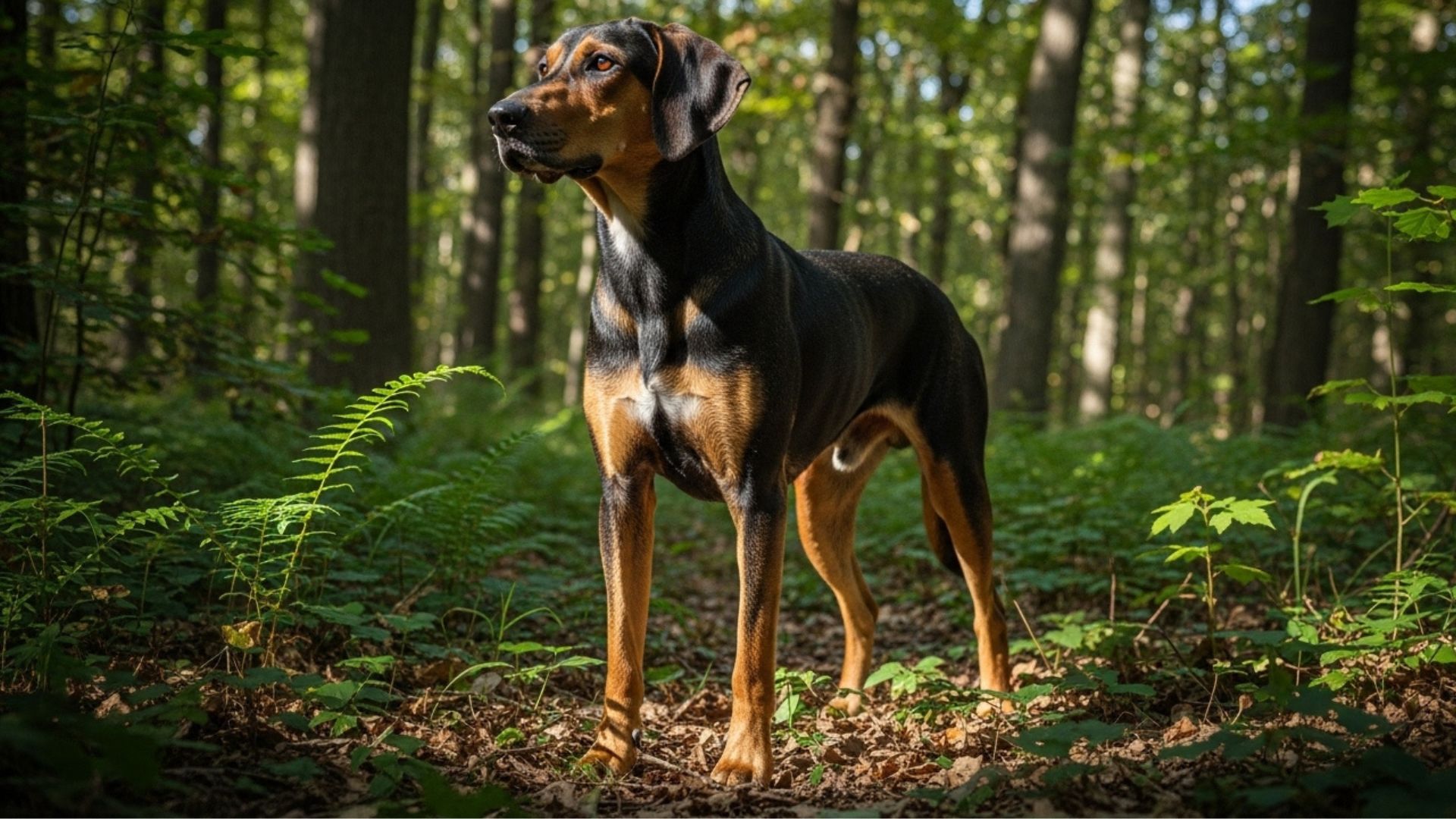Have you ever wandered through a dense forest, the sunlight barely reaching the forest floor, while every rustle of leaves keeps you on alert?
Hunting dogs have been by humans’ side since the very beginning of canine domestication, and compared with other dogs, they excel in endurance and scent tracking, long before agriculture reshaped the world.
What truly amazes researchers is how they use their extraordinary sense of smell: dogs can maintain a continuous inward airflow through their noses while running and tracking scent in dense terrain.
In one study, researchers found they sniffed up to 200 times per second and maintained this airflow for up to 40 seconds across 30 breathing cycles. This incredible ability makes them unmatched partners for bird hunters, upland game enthusiasts, and anyone navigating thick forests.
Choosing the right hunting dogs is about more than skill—it’s about connection. A dog that understands your pace, responds to commands, and shares the thrill of every scent trail transforms each forest hunt into an unforgettable adventure.
In this guide, we’ll explore the best dogs for hunting that excel in dense forests, along with other breeds suited for forested terrain.
Best Dog Breeds for Hunting in Dense Forests
1. German Shorthaired Pointer
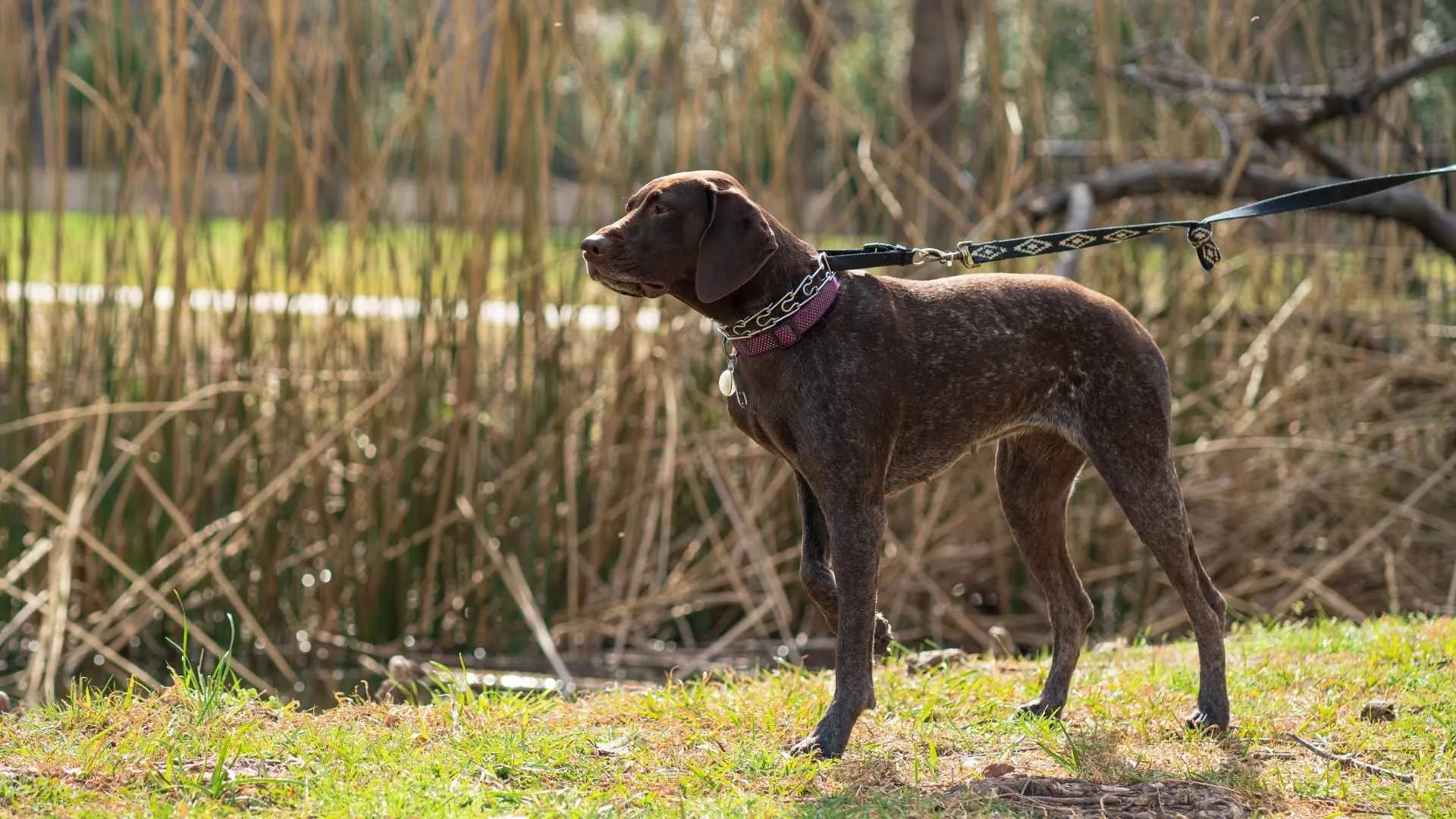
Ever seen a dog’s eyes light up the moment it catches a scent and locks into “hunt mode”?
The GSP is the type of medium‑sized dog that thrives in the thick undergrowth of dense forests and rough terrain. Known for being one of the most versatile dogs, this breed can track, point, and retrieve — all in one mission.
According to the AKC, the GSP is an enthusiastic gundog of all trades who thrives on vigorous exercise, positive training, and a lot of love.
When trained properly, the GSP, eager to please, becomes a hunting partner that keeps pace with you through forest shadows, keeps an eye on downed birds, and works side‑by‑side with you in pursuit of upland game.
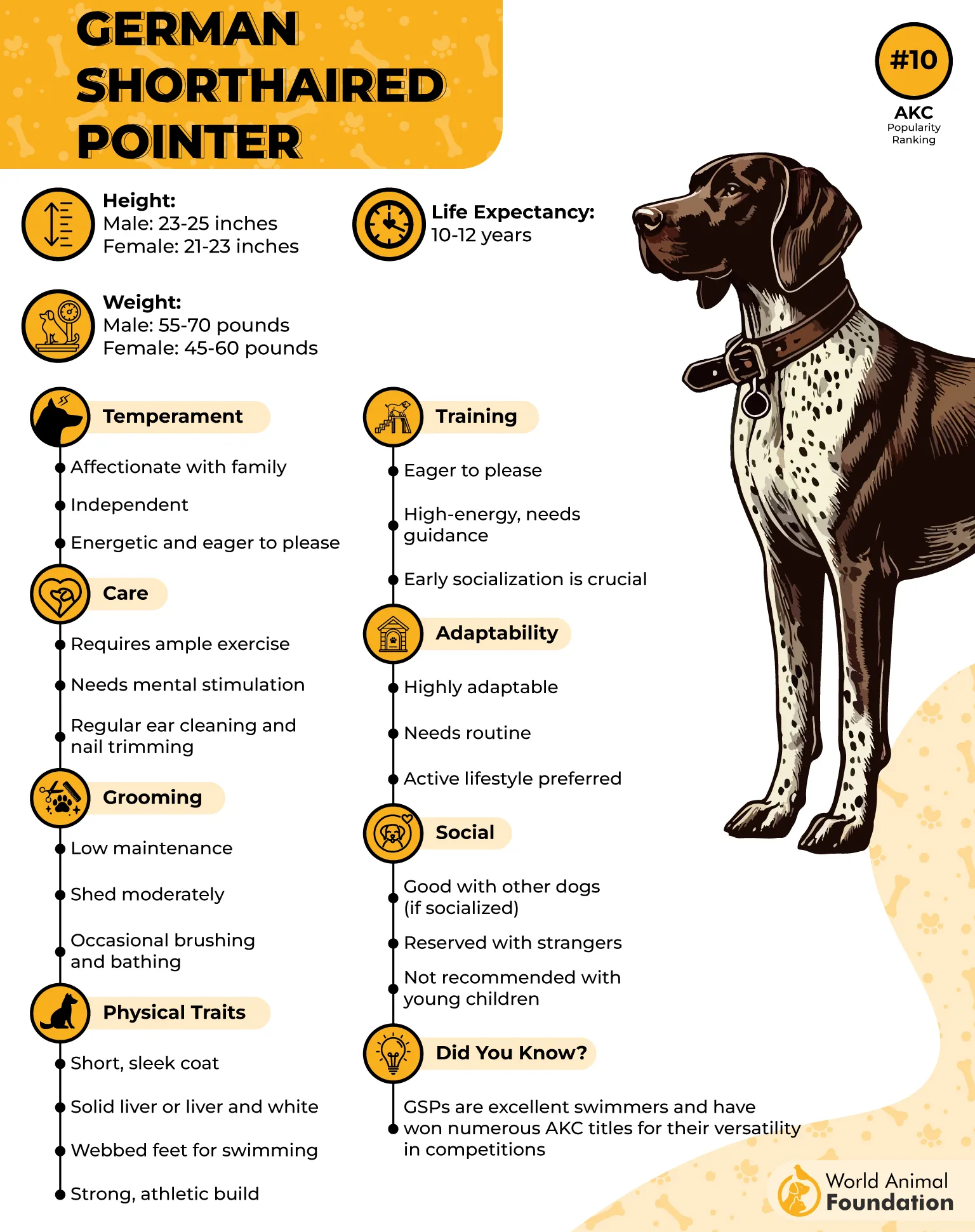
But here’s something to remember: this dog is highly energetic and doesn’t come with an “off switch.” Without daily bursts of activity and mental work, a GSP may become restless.
As noted by PetMD, the breed’s high energy and endurance make it excellent as a hunting bird dog, yet they require consistent exercise and training for both family life and field work.
Fun fact
The GSP was officially added to the AKC Study Book in March 1930, highlighting its long‑recognized role as a true all‑purpose gun dog.
2. Beagle

Ever seen a floppy‑eared bundle of energy stop cold, nose to the earth, and zero in on movement like it knows where the next rabbit will emerge?
The Beagle excels in thick underbrush and tangled forest floors thanks to its astonishing scent skills and strong drive to hunt small game.
Originally bred to pursue hares, especially rabbits, and hunt foxes on foot in England, this breed continues to shine as a true scent hound for bird hunters and upland game seekers alike.
With its compact, medium‑sized dog build, the Beagle can sneak through dense foliage and chase underbrush prey with surprising endurance and grit. For hunters working in pursuit in rough terrain, the Beagle’s ability to stick close to the scent trail and adapt to the forest’s shifting cover is a real asset.
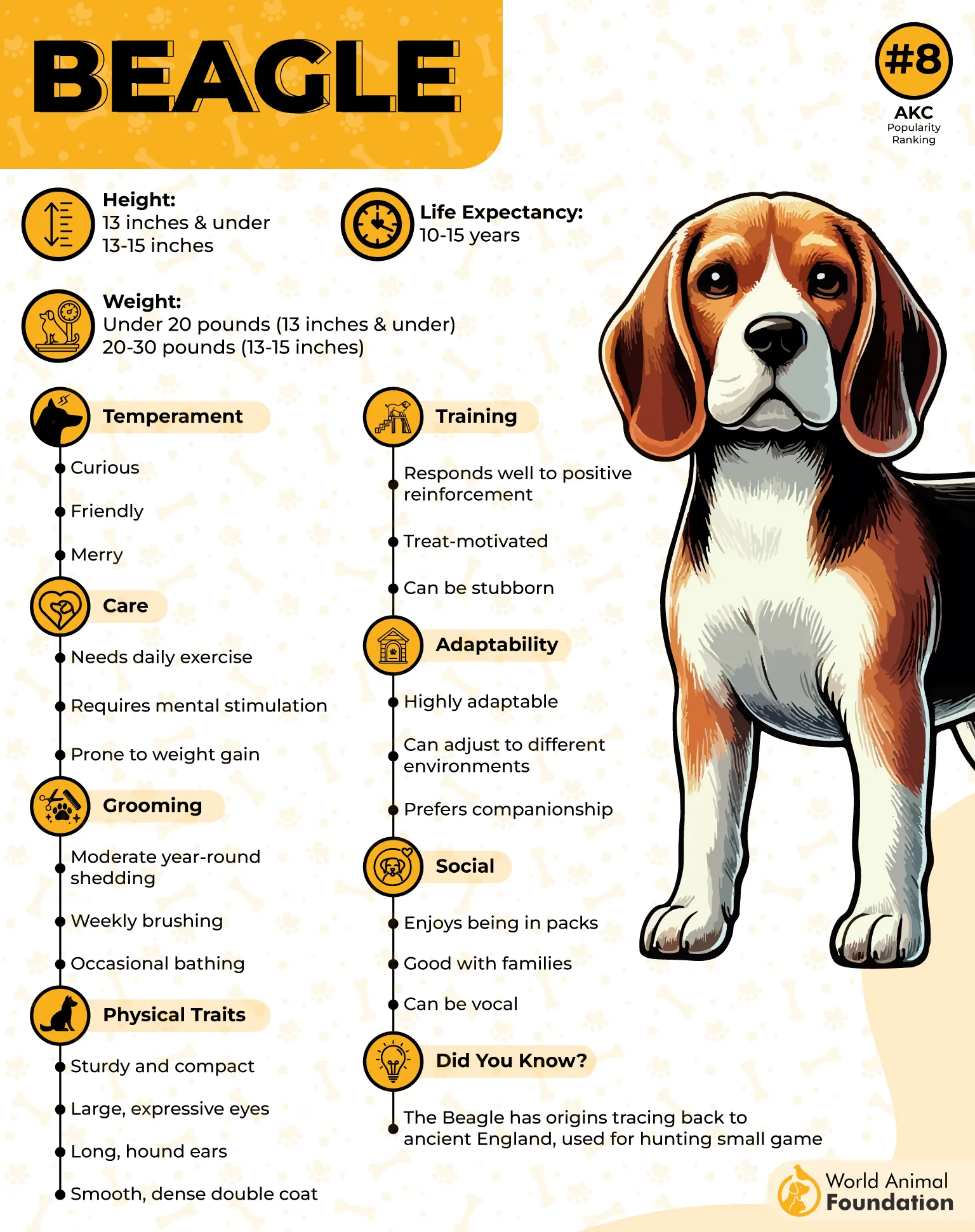
Their hunting history influences their behavior today—they can quickly get absorbed in a scent and may need guided training to maintain recall when the trail curls deep into the woods.
For anyone seeking a hunting partner that can work through heavy undergrowth, track wounded game where lines of sight are limited, the Beagle delivers both in the field and, like other hounds, as an energetic dog.
Fun fact
The U.S. Customs and Border Protection uses Beagles in its “Beagle Brigade” precisely because their sense of smell and tracking instincts are so reliable—even in crowded environments like airports.
3. English Springer Spaniel

Ever watched a dog burst through underbrush, eyes bright and tail sweeping like a metronome, ready to flush out the next hidden bird?
The English Springer Spaniel is a medium‑sized dog with a double coat built for action in dense forests and rough terrain. With a strong nose and athletic body, it was originally bred to flush birds and retrieve game in thick cover.
In woods and tangled undergrowth, this breed’s natural pattern of quartering and steady pace means it can cover ground, sniff scent trails, and flush birds within gun range—all ideal for upland game hunting scenarios.
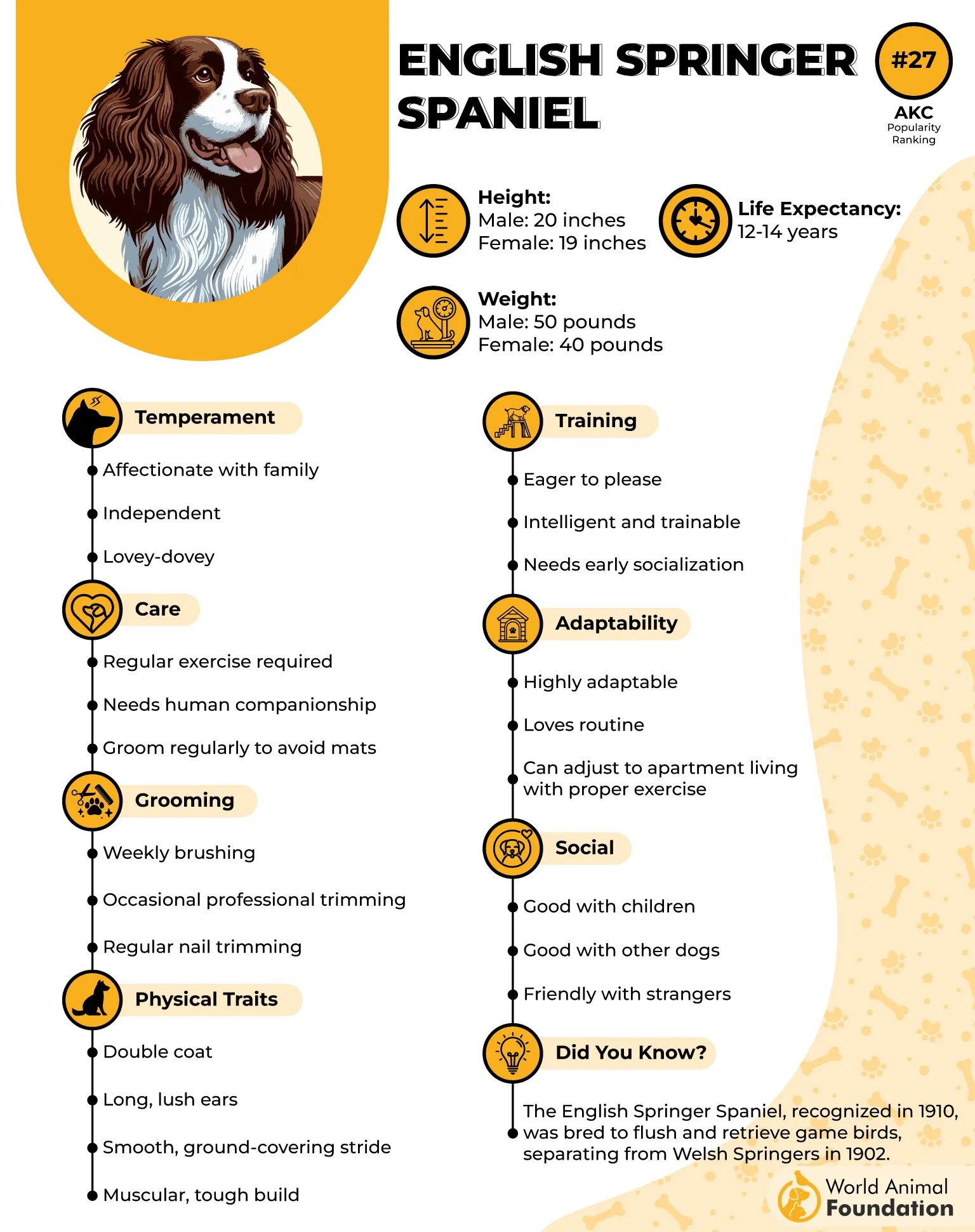
What’s really impressive is how the English Springer Spaniel balances serious field work with friendly family life. According to Purina, these Spaniel breeds are not only robust hunters but also affectionate, trainable companions who thrive when given a job.
However, because they are bred for action, they demand daily exercise, engagement, and purpose—without that, they may become less interested in collaboration. This makes them excellent hunting partners for those who move through dense forest and varied terrain, but less suited for sedentary lives.
Fun fact
The term “springer” comes from the dog’s original job—to “spring” game out of cover for hunters, meaning this breed was specifically developed to work in varied terrain, retrieve birds, and support the hunter’s aim.
4. Black and Tan Coonhound

Have you ever heard a deep, mournful howl echo through the woods and wondered what was calling out?
The Black and Tan Coonhound is built for the kind of deep‑wood hunting few breeds handle so well. With an excellent nose and athletic frame, this breed was originally developed in the United States to pursue tree raccoons through dense forest brush and rugged cover.
Their short, dense coat is black with tan markings, helping them slip through undergrowth, tracking scent trails even in tricky terrain. Because they were bred for persistence and stamina, they make excellent companions for hunting small game and treeing quarry in forests.
One of the standout traits of this breed is its strong scenting instinct and willingness to work independently.
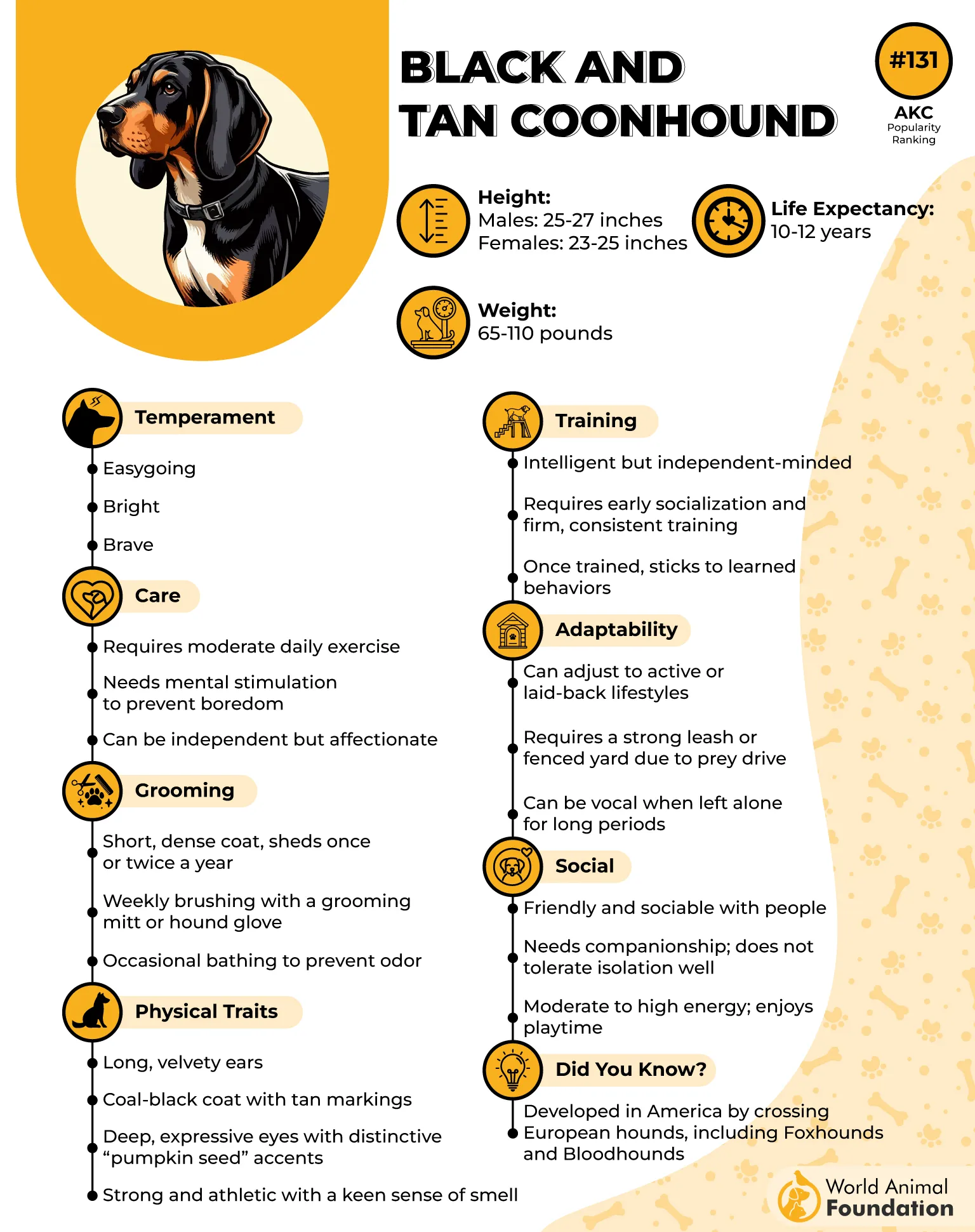
When the trail gets tough or the terrain uneven, a Black and Tan Coonhound follows its nose without hesitation—ideal in rough and varied terrain where sight alone won’t cut it. Training is key: this dog responds best when given direction, structure, and a purpose.
In active hunting households, it becomes both a skilled bird dog‑type tracker and an affectionate family dog. But if left idle, its prey drive may send it chasing other animals or wandering off after a scent.

Fun fact
The Black and Tan Coonhound was the first of the Coonhound breeds officially recognized by the American Kennel Club in 1945 — a true American original developed for forest‑hunting work .
5. Redbone Coonhound

Ever heard that deep, clear “bay” of a dog echo through the woods and thought something wild must be up ahead?
The Redbone Coonhound is tailor‑made for hunting in dense forests and rough terrain where visibility falls away and scent wins the game.
This American‑bred hunting dog evolved from Scottish and Irish Foxhounds and was crafted for tracking quarry like raccoons, wild boar, or even larger game, including mountain lions, through heavy cover.
Its smooth, short coat is solid, rich red, allowing it to move through brush without snagging, while its athletic build gives it stamina, speed, and endurance when following scent trails across uneven forest floors.
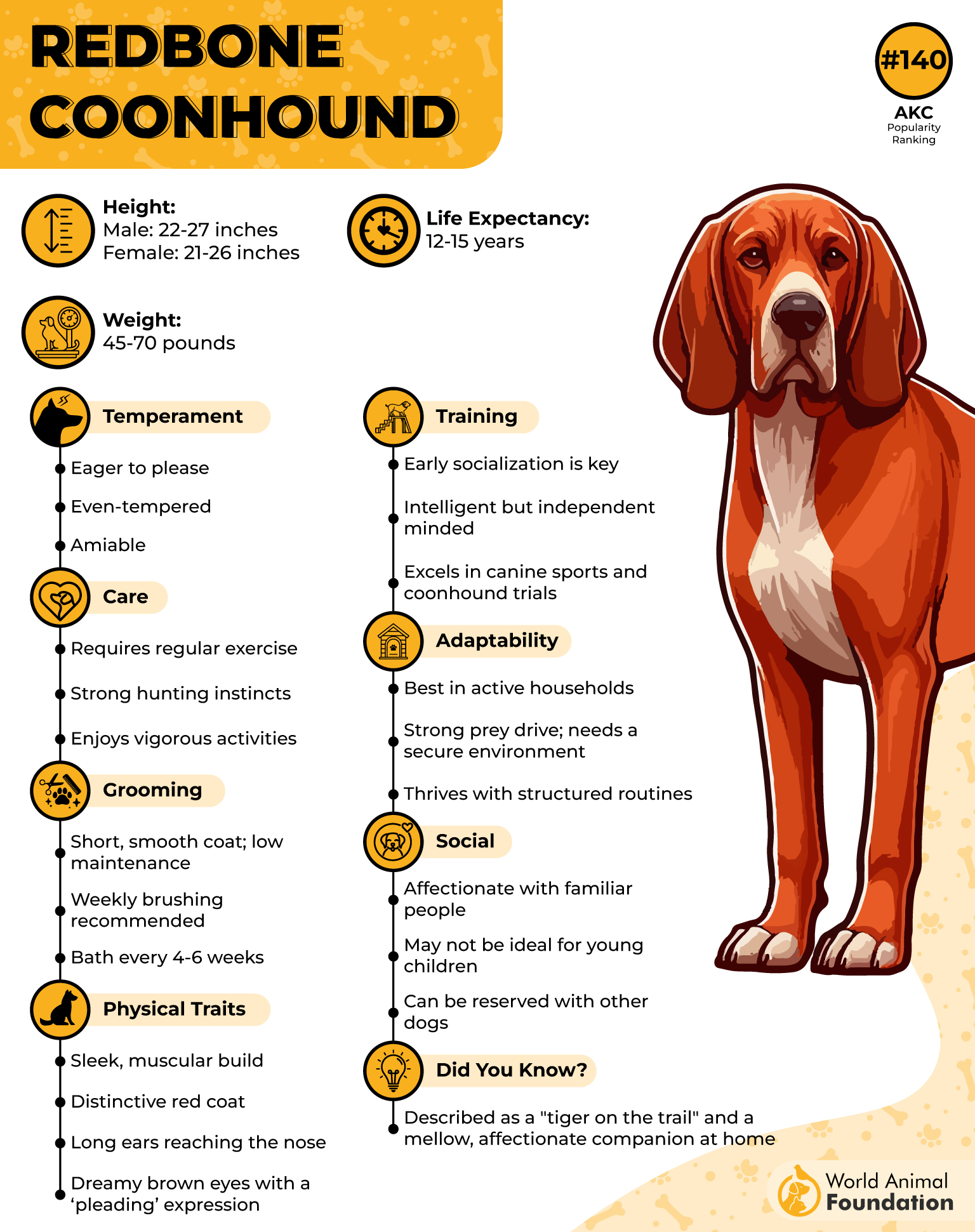
Where this breed truly shines is its scent intel and independent drive. When the trail fades or the prey ducks into undergrowth, the Redbone Coonhound keeps going—quietly, steadily, and with focus. Without plenty of exercise and purpose, this hunting dog breed can become restless or distracted.
So when you’re moving through dense woods, searching for small game or tracking wounded quarry, this dog can be the reliable companion you want for both the hunt and for home—provided you match its energy and give it meaningful work.
Fun fact
The Redbone Coonhound is one of the rare hunting breeds with webbed feet—an unusual trait—and its ancestors were adapted to hunt in swamps and bayous, making it surprisingly adept in wet and bushy terrain.
6. Labrador Retriever

Could a cheerful, floppy‑eared dog also be the most reliable partner when you’re moving through thick woods on a hunt?
The Labrador Retriever was bred specifically as a gun dog and retriever, bred to pick up shot game both on land and in cold water.
While many hunting breeds excel at tracking or pointing, this breed offers exceptional retrieving skills—making it a valuable companion for downed birds or game in dense forest cover.
Its thick, weather‑resistant coat and athletic build help it navigate muddy banks, forest floors, and wetlands with ease.
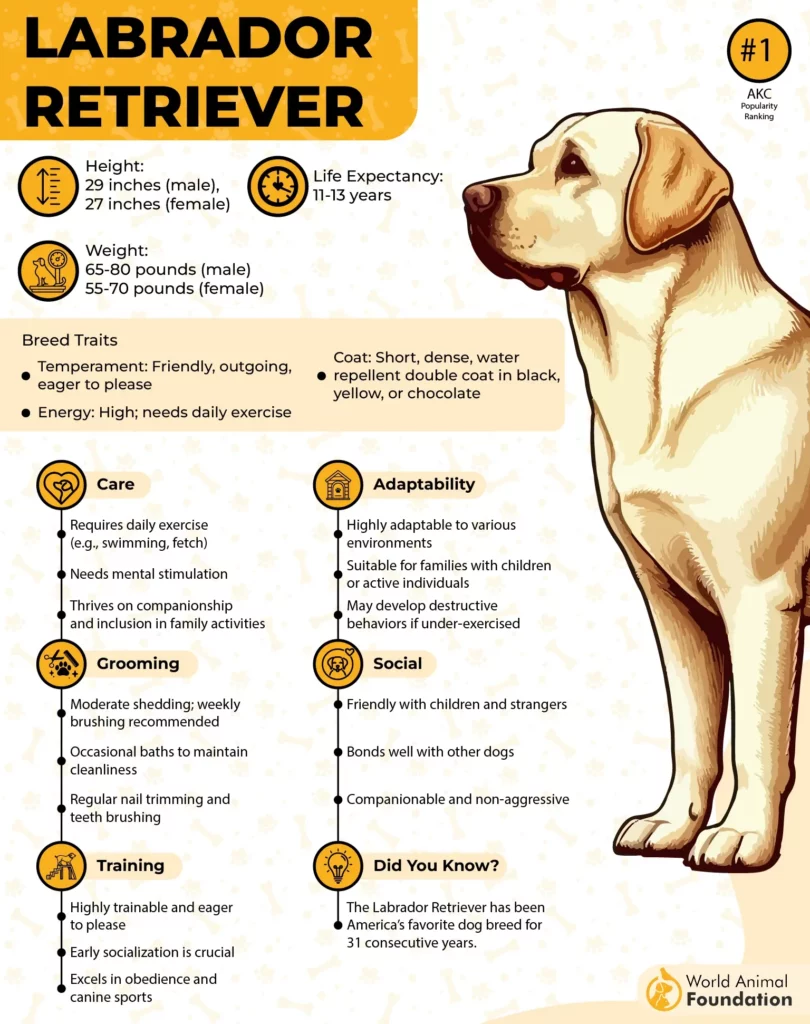
When you’re hunting through rough terrain or thick forests where visibility is low and scent is everything, the Labrador’s adaptability stands out. It can work as a bird dog, assist with upland birds, and even support hunters after the shot with its retrieving skills.
However, despite its friendly and family‑oriented nature, this dog is no couch potato—it thrives when given purpose, activity, and tasks to complete. Without those, even the best hunting dog breeds can become restless or bored.
Fun fact
The Labrador’s “otter tail” is not just cute—it helps the dog steer in water, where it was originally used for retrieving waterfowl from lakes and marshes.
7. Brittany

Ever watched a sleek dog weave through thick brush, tail high and eyes bright, like it’s dancing with the forest itself?
The Brittany thrives when the terrain gets wild and the hunt grows tricky. Originally developed in the Brittany region of France, this medium‑sized dog was bred to point and retrieve upland game in woods and fields alike.
With its agile build and energetic nature, the Brittany handles dense forests and rough terrain with ease, able to flush birds, find small game, and work closely alongside a hunter. Its keen sense of smell gives it an edge in forests where sight is limited and the cover is thick.
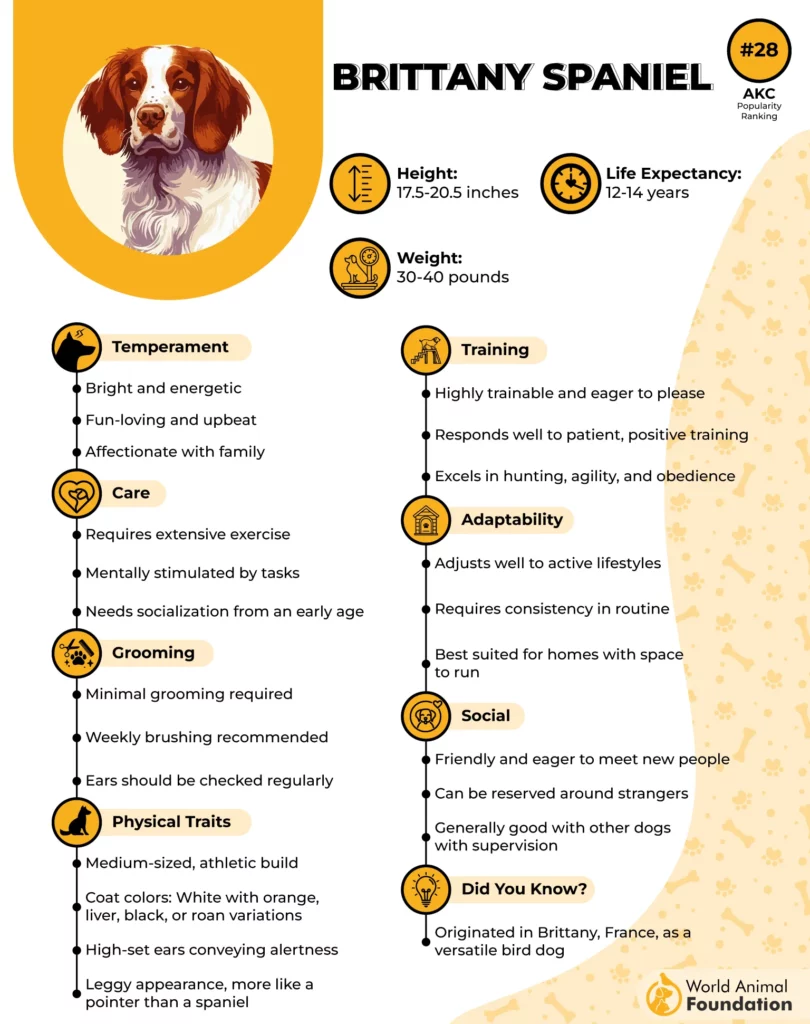
What really sets the Brittany apart is how it balances serious hunting capability with a friendly, family‑oriented nature. These dogs respond well to training and form strong bonds with their owners, making them excellent hunting companions and family dogs in active households.
But the drive is real: without regular exercise and purposeful work, even active dogs like the Brittany may lead to restlessness or mischief. For hunters moving through dense woods in pursuit of upland game or small animals, this breed offers the perfect mix of agility, scent skill, and enthusiasm for the hunt.
Fun fact
Despite being tipped often as a “spaniel,” the Brittany’s modern standard dropped “Spaniel” from its name in 1982, reflecting its strong pointing and retrieving abilities beyond those of a traditional flushing dog.
Conclusion
Hunting in dense forests demands more than just skill with a rifle—it requires a loyal, intelligent, and versatile companion by your side.
From the GSP’s athletic precision to the Beagle’s relentless nose, the English Springer Spaniel’s flushing expertise, and the scent‑tracking mastery of Black and Tan and Redbone Coonhounds, each breed brings unique talents to the hunt.
The Labrador Retriever offers unwavering retrieving skills, while the Brittany combines agility, energy, and sharp scenting instincts. Choosing the right hunting dog depends on your terrain, target game, and the type of hunting tasks you prefer.
With proper training, attention, and exercise, these dogs not only enhance your hunting experience but also become active, friendly dogs that enrich your family life.
Investing in a hunting companion means gaining both a skilled partner in the field and a loving family dog at home.


